Publisher: Amy Marson Creative Director: Gailen Runge Art Director/Book Designer: Kristy Zacharias Editors: Lynn Koolish and Joanna Burgarino Technical Editors: Priscilla Read and Gailen Runge Production Coordinator: Zinnia Heinzmann Production Editor: Alice Mace Nakanishi Illustrator: Tim Manibusan Photo Assistant: Mary Peyton Peppo Quilt photography and instructional photography by Diane Pedersen, unless otherwise noted Published by Stash Books, an imprint of C&T Publishing, Inc., P.O. Box 1456, Lafayette, CA 94549 Dedication To my husband, Johnmy rock and my everything Acknowledgments I would like to take this opportunity to thank everyone who made this book possible for me: Heather and David at Crimson Tate, who provided fabric, supplies, moral support, and everything in between; my friends Lisa, Darcie, and Holly, and my mother, all of whom helped me with the projects in this book; Lindsay and Michele, who encouraged me in the publishing world; and most of all, my family, who sacrificed so that this could become a reality. I would also like to thank the following companies for providing supplies for the projects in this book: CM Designs Dritz/OmnigridFreeSpirit FabricsHobbs BattingJune TailorMichael Miller FabricsQuilters Dream BattingRobert Kaufman INTRODUCTION Have you been wanting to try paper piecing? As long as you can use a ruler and rotary cutter and sew on a line, you can paper piece. I made my first paper-piecing project when I was in elementary schooland I wasnt exactly a master piecer then. All you need to do is to read the paper-piecing method instructions carefully and youll be set to make all the projects in this book. My goal in writing this book is to make it feel as though Im right there helping you.
All the fabric is rotary cut to save you the time and hassle of cutting out funky shapes with scissors, and the quilting photographs and discussions will inspire you to stretch your imagination to make these quilts your very own. I have organized the projects by level of difficulty, beginning with the easier projects and ending the book with more difficult projects. Any project is doable for the confident piecer with time, patience, and careful reading of the pattern, but if simple is your cup of tea, start at the beginning. A number of different methods can be used for paper piecing, but I present the method that I prefer. It involves cutting the seam allowances before sewing, rather than after. I have found that I make far fewer mistakes with this method and am able to use less fabric while piecing.
The projects in this book are written using my paper-piecing method, but you can use any method of piecing or cutting that you like. While I do include plenty of wiggle room in each fabric piece size, I cant guarantee that other methods of piecing will work perfectly with my cutting instructions. So if you would like to use another method, I suggest first testing blocks using scraps to see if you will need more fabric. Or, try the method in ; you might be surprised at how easy this method is. Happy sewing. Amy Ombr creates movement: In , a strong diagonal feeling pulls the eye down and across the quilt, from the upper left to the lower right. Amy
Ombr creates movement: In , a strong diagonal feeling pulls the eye down and across the quilt, from the upper left to the lower right. Amy Ombr creates movement: In , a strong diagonal feeling pulls the eye down and across the quilt, from the upper left to the lower right.
Ombr creates movement: In , a strong diagonal feeling pulls the eye down and across the quilt, from the upper left to the lower right.
CHOOSING FABRICS A Note about Color Schemes Although I have been formally trained in color theory and could tell you all about different color schemes, Im not going to. I used to stick much more closely to well-defined color schemes, but eventually I realized that this approach was holding me back. I find that my favorite fabric choices come from simply dumping fabrics onto my sewing room floor and moving them around to create new and fun combinations. I end up putting together colors and fabrics that I had never thought of putting together before. I encourage you to branch out and do the same. If the colors and fabrics look good to youthats what matters most.
It took me awhile to learn this lesson. Even though knowing color theory helps me understand why a color scheme might look good after Ive created it, I dont need this knowledge to decide. Yes, I like how that looks, or, Oh, thats horrendous. Go with your gut instinct and have plenty of fun playing around with your fabric. Creating Ombr The term ombr refers to the gradation from one hue (color) to another (such as from blue to red) or from one value to another (such as from light to dark). I really like to use ombr in my quilts and used this effect in several projects in this book.
It creates movement and interestusing it with purpose can help lead the eye in a specific direction. For all the patterns using ombr, I have helped you by indicating the number of fabrics you need to create this effect. Where possible, I have even listed the exact fabrics I used. When creating ombr with fabric, you wont be gradating seamlesslyfabric isnt paint. There will be jumps as you move from one fabric to another. The key is to try to make each jump similar so that none of the changes look abrupt or stand out in a negative way.
When working with fabric to create ombr, you can use solids, prints, or a combination of the two. When using prints, the best fabrics will be ones that read as a single color overall. They could even have small amounts of colors from the neighboring fabrics. Whether or not you choose to allow small amounts of other colors into your fabrics depends on your personal preference.  In , the eye is pulled from the upper left to the lower right.
In , the eye is pulled from the upper left to the lower right. 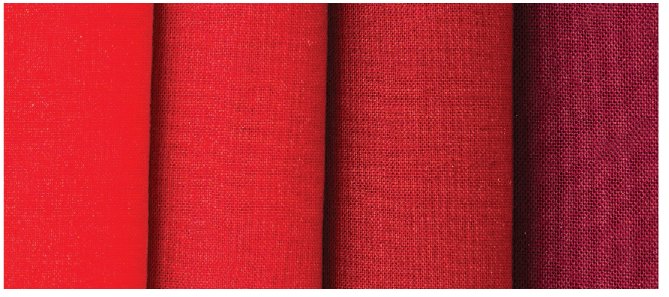 These are the fabrics I used for .
These are the fabrics I used for .
I used color cards from two fabric manufacturers to select a variety of solid reds that blended well from one to another. I highly suggest using color cards or purchasing fabric in person to create a precise ombr effect like this. Purchasing Fabric Shopping online for fabric is very common now. The benefit of this is that a huge selection of fabric is readily available. This is especially helpful if you dont have any quilt shops nearby. The downside of shopping online is that you cannot physically see the fabric for color accuracy before buying it.
You also cant bring in fabrics or make stacks of fabric bolts in the store to see how they interact with each other. I do both kinds of shoppingat my local quilt store and onlineas needed. I value the help that a good salesperson can offer when looking for different fabric combinations. I look online only if my local quilt shop doesnt have what Im looking for. Online shopping is best when I attempt to make my online shopping experience more like that of walking into a quilt storeI use color cards to make accurate color selection easier, and I only shop at e-stores that have well-lit photographs of their merchandise. I add extra fabrics to my shopping cart so that I can look at them all on the same web pagelike auditioning them next to each other in a physical storeand whittle down my selection from there.
Shopping If youre in the Midwest, consider stopping by my favorite local quilt store, Crimson Tate. They are located in downtown Indianapolis and carry only modern fabrics. Looking to shop online? Here are a few of my favorite online shops: crimsontate.com westwoodacresfabric.com hawthornethreads.com pinkcastlefabrics.com fatquartershop.com marmaladefabrics.com The Internet is an excellent source not only for regular quilting cottons, but also for specialty fabrics. If youre looking for something thats unique, out of print, hard to find, or hand printed, try looking at etsy.com. The printed fabrics I used for .) The Dear Stella Tiny Diamonds print in was also an Internet find. I had one small piece, but it was out of print.
Next page
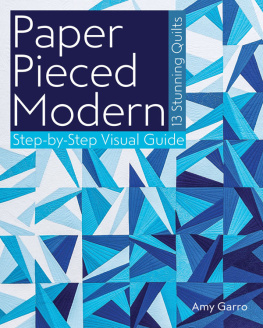
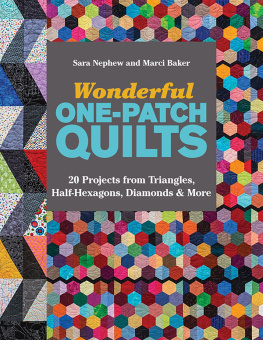
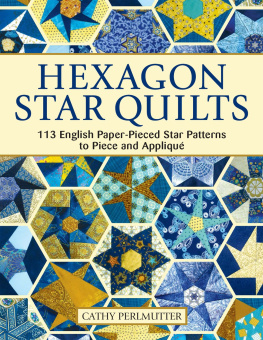
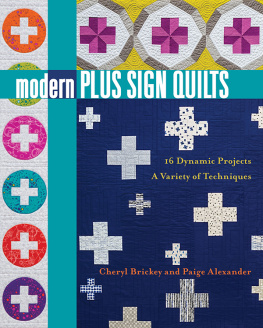
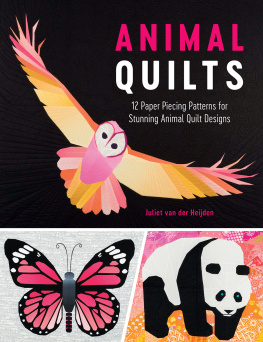
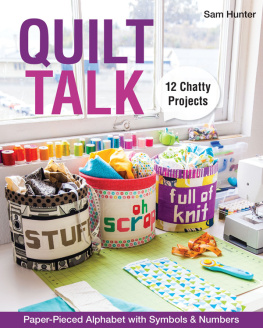
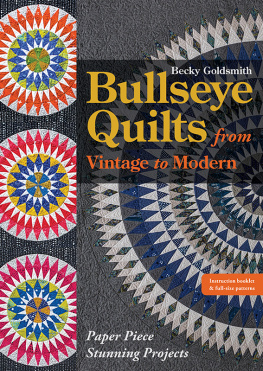
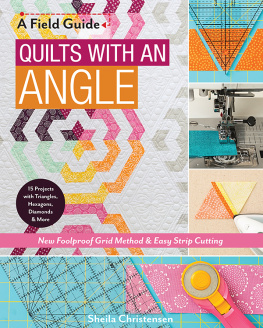
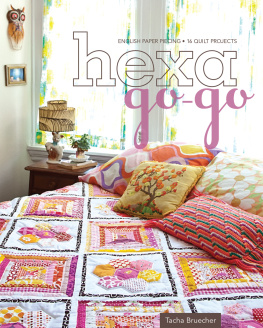
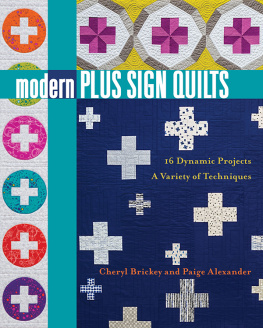
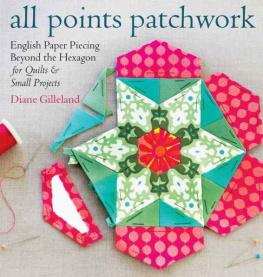

 Ombr creates movement: In , a strong diagonal feeling pulls the eye down and across the quilt, from the upper left to the lower right. Amy
Ombr creates movement: In , a strong diagonal feeling pulls the eye down and across the quilt, from the upper left to the lower right. Amy In , the eye is pulled from the upper left to the lower right.
In , the eye is pulled from the upper left to the lower right.  These are the fabrics I used for .
These are the fabrics I used for .